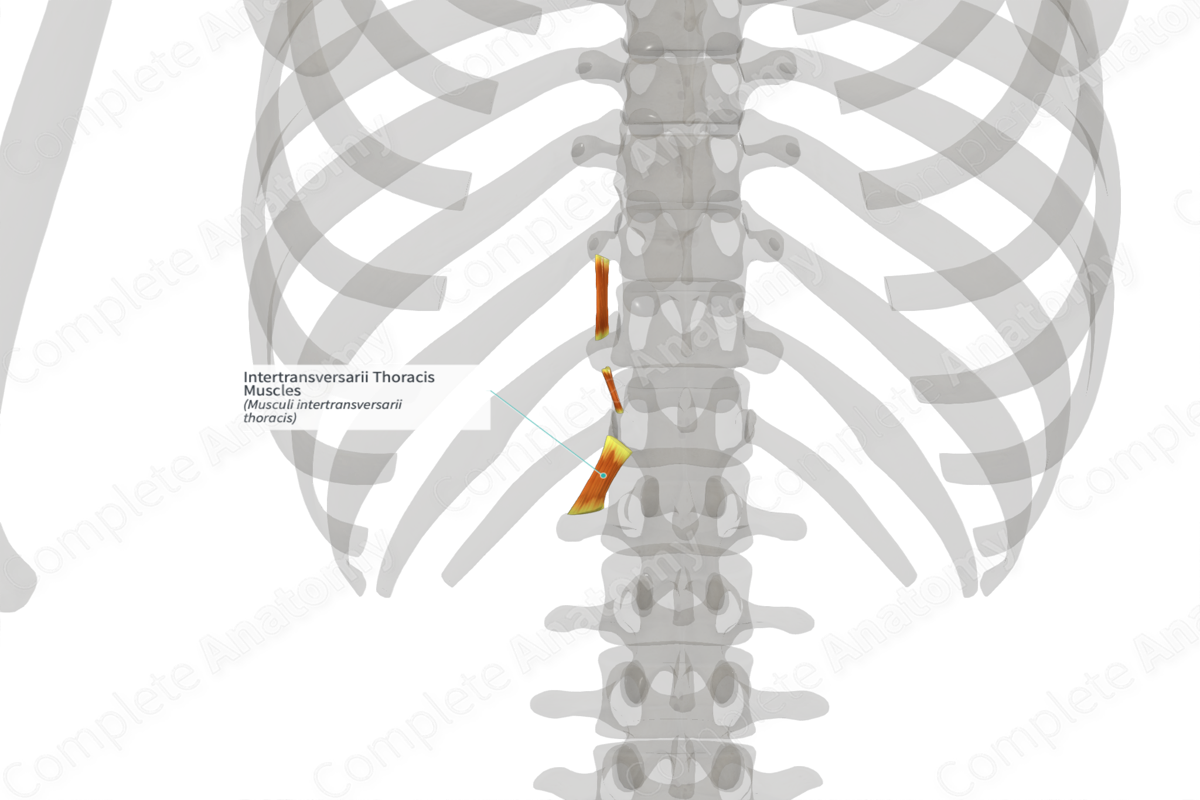
Intertransversarii Thoracis Muscles (Right)
Musculi intertransversarii thoracis
Read moreQuick Facts
Origin: Inferior aspects of transverse processes of T10-T12 vertebrae.
Insertion: Superior aspects of transverse processes of T11-L1 vertebrae.
Action: Assists in lateral flexion of the trunk.
Innervation: Posterior rami of lower thoracic nerves.
Arterial Supply: Dorsal branches of lower posterior intercostal and subcostal arteries.
Origin
The intertransversarii thoracis muscles originate from the inferior aspects of the transverse processes of the tenth to twelfth thoracic vertebrae.
Insertion
The fibers of the intertransversarii thoracis muscles travel inferiorly to the thoracic vertebrae that are located one vertebral segment inferior to their origin sites. They insert onto the superior aspects of the transverse processes of the eleventh thoracic to first lumbar vertebrae.
Key Features & Anatomical Relations
The intertransversarii thoracis muscles are the most central of the three parts of the intertransversarii muscles. They are intrinsic muscles of the back and are composed of short individual muscles.
The intertransversarii thoracis muscles are located:
- anterior to the longissimus thoracis muscle;
- medial to the levatores costarum longi and breves muscles;
- lateral to the short rotatores, long rotatores and multifidus muscles.
Actions
The intertransversarii thoracis muscles assist in lateral flexion of the trunk to the same side during unilateral contraction. They also help stabilize the lower thoracic vertebrae (Moore, Dalley and Agur, 2009). They may also be involved in proprioception (Standring, 2016).
References
Moore, K. L., Dalley, A. F. and Agur, A. M. R. (2009) Clinically Oriented Anatomy. Lippincott Williams & Wilkins.
Standring, S. (2016) Gray's Anatomy: The Anatomical Basis of Clinical Practice. Gray's Anatomy Series 41st edn.: Elsevier Limited.




